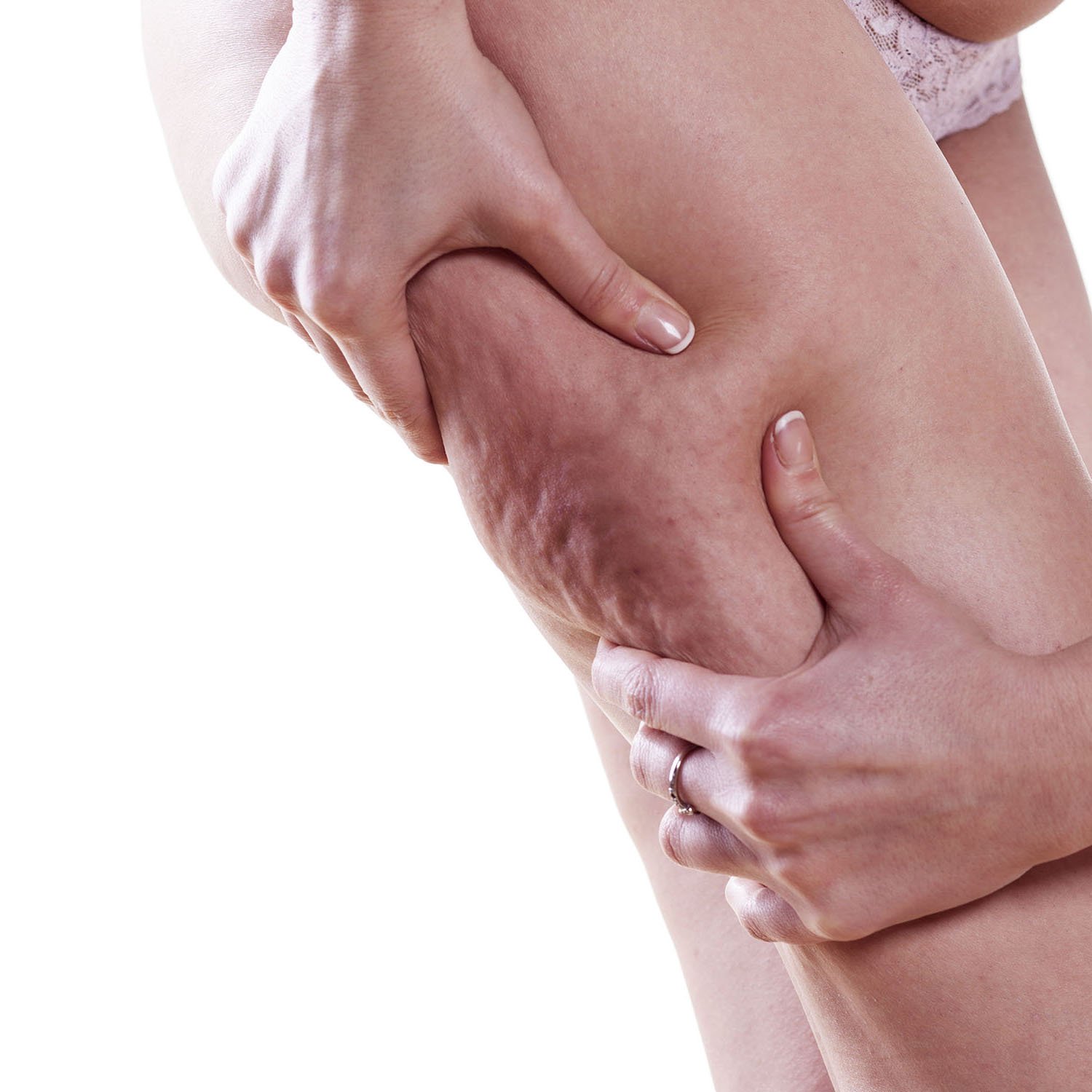Whoever says that cellulite = lipedema = “just fat” they need to do some study
We are excited to share our experience in cellulite and skin tightening, from our clinic in London with everyone in the world. Check all our articles here, and if you do live in/near London book an assessment, consultation or treatment with us here.
Cellulite vs fat vs lipedema: what are the differences?
“Cellulite is just fat, get over it”. Seriously?
Why “cellulite is just plain fat”, according to “experts”
Fat vs cellulite: the main anatomical difference between “fat” and cellulite
More anatomical and physiological differences between superficial adipose tissue and cellulite
“Fat” just increases your girth/volume. Cellulite causes the bumpy appearance.
Inflammation, fibrosis, poor circulation, water retention
Fat and cellulite develop in quite distinct ways too
Use your eyes: Of course cellulite does exist
Stop gaslighting women about cellulite
Lipoedema patients always have cellulite too
Do I have lipedema or just cellulite?
Free lipoedema / cellulite ultrasound scan and consultation
Deep-acting, high-power radiofrequency for post-lipedema surgery skin laxity and cellulite
Check our professional consultancy in radiofrequency, ultrasound cavitation, cellulite and skin tightening
Cellulite vs fat VS lipedema: what are the differences?
Love it or hate it, cellulite and lipedema are different to what we call “fat” and in this article we will analyse the differences between what people call “cellulite” and what they call “fat” - and what is lipedema too.
Like all things in life, people may love, hate or ignore cellulite (and lipedema), and we are fine with all these options. It’s all a personal choice.
But the fact that cellulite can be beautiful for some or indifferent to some others, doesn’t make it “just fat”. Cellulite is different to what people call plain “fat”, and this article is all about clarifying the difference. And the fact that lipedema looks like a mix between obesity and cellulite, does not make it either.
In this article we are analysing in detail what is cellulite, what is fat and also what is lipedema and the differences between the three.
If you are interested, read on…
“Cellulite is just fat, get over it”. Seriously?
That’s a favourite of mentally lazy, so-called “experts”, who have never bothered to read one of the dozens of excellent peer-reviewed studies about cellulite and how much it is different from plain fat.
If you were a layperson you would be excused to think that “cellulite is just fat”, since “the experts say so”.
However, if you are a health or aesthetic professional, such ignorance of basic anatomy and physiology, is inexcusable - and even demeaning and dismissive for your clients/patients.
Not to mention the lack of ability to accept what your very eyes see in front of you…
Why “cellulite is just plain fat”, according to “experts”
According to those “experts” cellulite is just fat and…
It’s there only because you eat too much and you have put on weight (what colossal ignorance)
To reduce cellulite, all you need to do is lose weight (it never works out that way, does it?)
Have some liposuction and it will go (my advice: don’t be lazy and open a book and read some basic anatomy and physiology, liposuction does NOT remove an inch of cellulite)
Cellulite does not exist - it’s just a construct by the French beauty industry in the 1930s (Seriously? That was one ignoramus’ view back in the 1970s and people keep repeating this garbage in the 2020s, fifty years later?)
Healthwise, there is nothing wrong with cellulite (more advice: open a good peer-reviewed study, for a change, and read, cellulite is NOT healthy, especially advanced cellulite)
There is nothing wrong with fat in general (on what decade do you live, in the 1960s? haven’t you heard of adipose tissue inflammation, adipokines, the adipose tissue’s endocrine function, insulin resistance, diabetes, heart disease, adipose tissue fibrosis or adipose/immune tissue senescence, to name but a few health consequences of excess body fat, cellulite fat or lipedema fat?)
Fat vs cellulite: the main anatomical difference between “fat” and cellulite
First off, let’s discuss the main issue here: the distinction between fat and cellulite.
What people call “fat” are two different types of adipose (fat) tissue:
VISCERAL ADIPOSE TISSUE (VAT), which is found between and around your organs, deep in the abdomen. This deep belly fat is the cause of the “pot belly” or “beer belly” appearance and of course has nothing to do with cellulite. Plus it cannot be reduced with liposuction or any other surgical or non-surgical intervention. Only diet and exercise works for this type of fat.
SUBCUTANEOUS ADIPOSE TISSUE (SAT), which as the name suggests is literally “fat tissue under the skin”. This is what most people refer to as “fat”, e.g. fat cheeks, fat under-chin, fat arms, fat thighs, fat calves, (superficial) belly fat, fat buttocks etc. Subcutaneous adipose tissue is a distinct fat tissue UNDER the skin. This is the fat that CAN be removed by liposuction but that CANNOT be removed efficiently by non-surgical treatments.
However, cellulite is a totally different thing. It is not fat under the skin, it HYPODERMAL ADIPOSE TISSUE, i.e. fat INSIDE the skin, and it is found ABOVE the subcutaneous adipose tissue. As it is part of the skin, it obviously CANNOT be removed by liposuction but it CAN be removed by non-surgical treatments, the most effective of which being deep-acting, high-power radiofrequency and high-power ultrasound cavitation.
ADIPOSE TISSUE UNDER THE SKIN = ‘FAT’, removable by liposuction, but not non-surgically
ADIPOSE TISSUE INSIDE THE SKIN = ‘CELLULITE’, removable by deep-acting, high-power radiofrequency / high-power ultrasound cavitation, but not with liposuction
Two totally different things.
(LIPOEDEMA FAT refers to excessive inflamed subcutaneous adipose tissue. It is quite similar to cellulite but it is found on the deeper subcutaneous level and not on the hypodermal level, where cellulite is found. Like cellulite can be, lipedema fat is painful, bumpy and inflamed and does not get reduced with diet or exercise. Lipedema can only be removed with specialist liposuction surgery - nothing else works.)
More anatomical and physiological differences between superficial adipose tissue and cellulite
The differences between the two tissues don’t end on anatomical location.
Subcutaneous adipose tissue consists of almost pure fat cells, with comparatively little connective tissue and little water retention/poor circulation in it (sometimes it can become more fibrous but nowhere near what cellulite is made of, see below).
Cellulite is composed of fat cells, of course, but also of a high amount of connective tissue. Plus, quite often, it is characterised by high levels of inflammation, water retention/poor circulation, as well as fibrosis and contraction of said connective tissue.
In summary:
ALMOST PURE FAT, WITH SOME CONNECTIVE TISSUE AND WITH LITTLE WATER RETENTION = ‘FAT’
FAT TISSUE WITH HIGH LEVELS OF CONNECTIVE TISSUE AND QUITE OFTEN A LOT OF WATER RETENTION AND FIBROSIS = ‘CELLULITE’
Two totally different things.
(Again, LIPEDEMA is subcutaneous fat indeed, but it behaves like cellulite: lots of fibrosis, inflammation, water retention/poor circulation and contraction of connective tissue).
“Fat” increases your girth/volume. Cellulite causes the bumpy appearance.
Furthermore, as the subcutaneous adipose tissue (SAT) is relatively deep and it is not very fibrous by nature, it does not normally cause any peaks and troughs, or “bumps”.
Occasionally, SAT does have some peaks and troughs and also long ridges and long troughs. This is due to compartmentalisation of subcutaneous adipose tissue and some people erroneously call it “cellulite”.
This is the pseudo-cellulite that subcision/cellfina surgery acts on (about 15-30 “cellulite” bumps only), while by definition subcision/cellfina does absolutely nothing for the 100s or 1000s of real cellulite bumps.
SAT can also be very, very thick, adding to your girth / volume in the area.
In contrast, cellulite fat (= hypodermal adipose tissue), being part of the skin itself, is a thin layer of tissue, it is quite superficial and it is also very fibrous by its nature. This leads to the bumpy, 'peaks and troughs’ skin appearance.
In summary:
THICK, DEEPER TISSUE WITH FEW FIBROUS STRANDS = VOLUME/GIRTH = ‘FAT’
THIN, SUPERFICIAL TISSUE WITH FIBROUS STRANDS = BUMPS = ‘CELLULITE’
Two totally different things.
(LIPEDEMA adds both girth/volume and bumps, so again it shares features of both cellulite and subcutaneous adipose tissue.)
Inflammation, fibrosis, poor circulation, water retention
It is true that subcutaneous adipose tissue can suffer from excessive connective tissue deposition (fibrosis/scar tissue), poor circulation and inflammation, but nowhere near the levels of either the very deep visceral fat or the very superficial cellulite fat.
In contrast, hypodermal adipose tissue (= cellulite fat) can become very inflamed and can suffer from a lot of poor circulation (showing as almost purple coloured blotchiness).
It can also become excessively fibrous, leading to the “peak and trough” / cottage cheese skin / orange skin peel appearance.
So:
RELATIVELY LITTLE INFLAMMATION, OEDEMA AND FIBROSIS = ‘FAT’
HIGH LEVELS OF INFLAMMATION, OEDEMA AND FIBROSIS = ‘CELLULITE’
Two totally different things.
(Again, LIPEDEMA is an exception to this rule, as it is subcutaneous fat that behaves like a deep, giant cellulite tissue, characterised by Inflammation, fibrosis, poor circulation and water retention.)
Fat and cellulite develop in quite distinct ways too
And the differences do not end in the anatomical and physiological descriptions.
Plain “fat” (subcutaneous adipose tissue) develops simply due to a positive calorie balance. In extreme circumstances (lymphedema), poor lymph drainage can also stimulate fat accumulation in that tissue.
On the other hand, cellulite can easily develop because of simple water retention/oedema at low levels. These levels are nowhere near the serious lymphedema needed to trigger adipose enlargement in normal “fat”.
Furthermore, cellulite can easily occur in slim women just because of inflammation, inactivity, water retention, unhealthy food choices, smoking or taking the contraceptive pill. You do not need to overeat or be “fat” (i.e. you don’t need to have lot of subcutaneous adipose tissue) to get it.
Yes, it can develop due to a positive calorie balance too, but the latter is not needed for cellulite to accumulate, while for subcutaneous adipose tissue enlargement (what we call “putting on weight”) a positive calorie balance is a prerequisite.
Plus cellulite is more prone to develop excessively due to contraception / estrogen imbalance.
In summary:
IF IT DEVELOPS ALMOST ALWAYS DUE TO A POSITIVE CALORIE BALANCE = ‘FAT’
IF IT CAN ALSO DEVELOP DUE TO INACTIVITY (IRRESPECTIVE OF CALORIE BALANCE), DUE TO WATER RETENTION, DUE TO EXCESS ESTROGEN OR EVEN IS SLIM WOMEN = ‘CELLULITE’
Two totally different things.
(LIPEDEMA is different to both cellulite and subcutaneous fat in that it develops due to a genetic predisposition. It is indeed affected by hormones and calorie balance but the main cause is genetic.)
Use your eyes: Of course cellulite does exist
I hope the case for the difference between cellulite and “fat” has now been made clear. However, there is one more thing. Let’s even forget for a moment what science says.
My advice to the “cellulite is just fat” / “cellulite does not exist” ignorant experts is the following:
If you see with your eyes A THIN, FIBROUS LAYER OF BUMPY FAT INSIDE THE SKIN and then equate it in your thinking with A THICK, WOBBLY LAYER OF DEEP FAT UNDER THE SKIN, you do have a problem, either with your eyes or with your thinking.
And this is the problem those “experts” have: in order to prove a spurious point, they are not even able to see with their eyes.
(People with LIPOEDEMA have always suffered with the exact same same prejudice and being told to “just lose weight” or being misdiagnosed with lymphoedema. Lut luckily doctors and the public alike are gradually becoming more aware of it.)
Stop gaslighting women about cellulite
If a woman says that she does not care about her curves but that she doesn’t like the bumpy appearance, and then you tell her “you’re crazy, it’s all fat, it’s all in your mind”, then:
You basically disrespect that woman by gaslighting her
You bury your head in the sand, refusing to see what your eyes see
No matter what name you give to it, cellulite is there, in front of your eyes.
It is a visible, quite often inflamed, sometimes painful, hardened, unsightly for many, fat tissue that protrudes out of the skin, and nobody can deny its existence.
You see it in an ultrasound scan, you see it in an MRI scan and you see it with your eyes too.
If the name 'cellulite' offends you, call it 'superficial hardened lumpy puffy inflamed fat', if you must, but it does exist and it is still different to plain deep “fat”.
If you love it or find it pretty or if you are indifferent to it, good for you.
But do not offend hundreds of millions of women who don’t like it - for whatever reason they may choose not to like it - and who want to improve it.
It’s their prerogative, their life, their body, their freedom and none of your business.
(And the same and more can be said for lipoedema, as it is an actual genetic health condition.)
Lipoedema patients always have cellulite too
Before we finish this article it is important to properly sum up lipoedema.
As mentioned above, lipedema a subcutaneous adipose tissue (SAT) condition that makes it appear like deep, painful “cellulite on steroids”, with bumps much bigger than cellulite bumps.
However, in contrast to cellulite which is hypodermal adipose tissue, lipedema is indeed subcutaneous adipose tissue. Although generally benign, subcutaneous fat can also get inflamed, fibrous and bumpy - just not nearly as much as cellulite.
Lipoedema, on the other hand, is subcutaneous adipose tissue that does not just appear but also behave like progressed, severe cellulite: lots of oedema/inflammation (hence the name), lots of adipose tissue expansion and lots of fibrosis (the usual consequence of chronic inflammation on connective tissue).
It is no wonder then that, just like severe cellulite, lipedema, can be painful to the touch - even more so than progressed cellulite.
Please note that lipoedema sufferers also have quite progressed cellulite (enlarged hypodermal adipose tissue), IN ADDITION TO the enlarged subcutaneous adipose tissue.
Do I have lipedema or just cellulite?
This is a very valid question, as lipedema, cellulite or plain fat can be confused by non-experts. Here are some tips:
Can you grab the lumpy fat with your palm (deep and large tissue to GRAB)? That is either fat or lipedema.
Can you only grab the lumpy skin with your fingers (small and superficial tissue to PINCH)? This is most probably cellulite.
Do you have disproportionate, excessive, lumpy fat accumulation on your thighs, arms and especially calves, with much less fat elsewhere on the body? Is the fat very painful? Does this fat not respond AT ALL to diet and exercise? That could be lipedema.
(Water retention / oedema is a common occurrence to many women with cellulite or plain fat accumulation, so it cannot be used to differentiate between cellulite, plain fat or lipoedema. The differentiation must be based on disproportionate, excessive, stubborn fat, usually localised on arms and legs)
Of course, the above are not a diagnosis but can give a few hints regarding what it is that you may suffer from. For a proper diagnosis please consult with your doctor. You may also read more about lipedema here.
Free lipoedema ultrasound scan and consultation
As part of our research project into lipedema before surgery, LipoTherapeia currently offers a free 45’ ultrasound scan and consultation for lipedema or suspected lipoedema patients, BEFORE surgery (normally £200).
To book your appointment please contact us here, mentioning on the form that you are interested in the lipedema consultation and scan, and we will get back to you asap.
You can have the scan before or after lipedema surgery (but it is offered free only pre-surgery).
The scan will visualise your:
Cellulite
Skin laxity
Subcutaneous fat, due to lipedema or other factors
Water retention, due to lipedema or other factors
Fibrosis, due to lipedema itself, lipedema surgery or other factors
The scan is a useful informational tool to “see” into your skin / adipose tissue / cellulite but is not intended to officially diagnose any disease. For an official diagnosis you must still talk to your GP.
This scan is currently offered free but only to a limited number of people and for a limited time only.
Deep-acting, high-power radiofrequency for post-lipedema surgery skin laxity and cellulite
Lipedema is a genetic condition that causes subcutaneous adipose tissue in the entire legs and arms to become hypertrophic and severely expanded, regardless of how careful one is with diet or exercise.
Lipedema tends to develop in the teen years, 20s, or at the latest, in a woman’s 30s.
Quite often specialist surgery (usually provided in Germany, where they seem to be experts in it) is the only good solution to the problem.
Diet will not work, cellulite treatments will NOT work, strong massages will NOT work (many people tried and failed) and of course local non-surgical fat reduction treatments, such as cryolipolysis will NOT work either (well, the cryolipolysis hardly works on healthy people, anyway).
After lipedema surgery, skin is left loose, due to the removal of fat that occupied a lot of volume under the skin. Cellulite is also quite pronounced in lipedema sufferers, both before and after surgery.
Cellulite and loose skin can then be improved with a course of deep-acting, high-power radiofrequency and deep acting, high-power ultrasound cavitation, the strongest SAFE anti-cellulite technologies available today.
Check our professional consultancy in RF, ultrasound cavitation, cellulite and skin tightening
Do you want to deeply understand radiofrequency, ultrasound cavitation, cellulite and skin tightening? Attend an 1-hour, half-day, 1-day or 2-day professional consultancy / one-to-one masterclass and confidently offer your clients the safest, strongest and most effective treatment possible. Service available via Zoom or at our central London practice.






